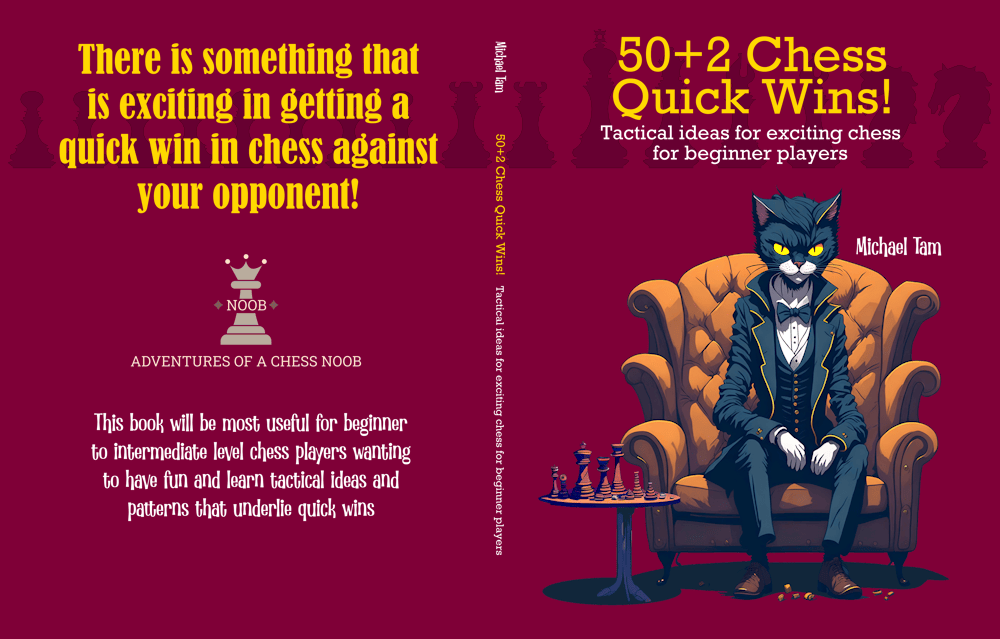
SQUISH the Creepy Crawly Formation! 🔨🪳♟️🤣
#creepycrawly #michaelbasman #tactics
Every now and then, I encounter an opening I’ve never seen before. This is one of the great things with playing online chess!
This was a game of 15+10 rapid from last month where I was randomly matched against an ELO 800 rated player. In this case, however, they played the interestingly named, “Creepy Crawly Formation” (1. a3 e5 2. h3 d5), where White leads with the two outside flank pawns, while Black takes control of the centre files.
When I had a look at the database, apart from one historical game where the Creepy Crawly was played in tournament in Germany, (Lichenscheidt—Von Hanneken, 1862 Duesseldorf), the originator of this unusual opening is British IM Michael Basman (1946-2022). Basman was known for his creative style and for playing off-beat, unorthodox openings like the Creepy Crawly which he developed, but also the Grob (1. g4); the Borg Defense (1. e4 g5), a mirror image of the Grob (note: “Borg” is “Grob” spelt backwards!); and the St George Defense (1. e4 a6).
Basman passed away a couple of years ago from pancreatic cancer at the age of 76 years, and chess.com has a wonderful obituary written by @PeterDoggers that is well worth reading. I’ve also extracted the twenty-six Creepy Crawly Formation games played by Basman in tournaments in the 1990s in my database to a PGN that you can explore!

![]()
I had the black pieces in this game, and against the Creep Crawly Formation, I simply played according to opening principles. As a heuristic, even if the moves are not the most accurate, it’s usually still solid and fine. So, take the full centre with pawns, develop pieces, knights before bishops, castle.
However, one must respond to the opponent as well and I was surprised when White played (5. b4), looking to immediately expand down the queenside. It seemed that White was planning b5, which would pressure my knight on c6, so I played (5… a6). Although Stockfish calls this an inaccuracy (Stockfish was unafraid and recommended striking in the centre), it does in fact counter White’s intended (6. b5?!), which is now inaccurate!
Simply, after the trades (6… axb5 7. cxb5), Black’s a-file is opened, and thus, it takes away the potential sting of White playing Qa4, with an attack down the light square diagonal to Black’s king.
As we moved towards the middlegame, I had a strong sense that I was ahead as I had much better development despite the material equality. I was happy to trade some pieces, but this does have to be done carefully. Trade away too much material, and you lose your developmental advantage and the game moves back to equal! I realised this happened to me by around move 14, though I still felt that I probably had an advantage in initiative. On move 16, White played a sensible looking move with (16. Rd3?), seemingly attacking my d4-pawn twice. However, I now saw a new tactical plan – White’s queenside was completely smashed, and White’s king had a potential back rank problem. With the semi-open a-file, my queen’s rook on a8 had an expressway to launch an attack!
White didn’t recognise the threat and blundered by greedily capturing material (17. Rxd4??), as (17… Ra1+!) is almost back rank checkmate! White has only a single legal move, to sacrifice their knight to block the check (18. Nc1 Rxc1+) and open an escape square (19. Ke2). A couple of moves later, we had a very interesting bit of rotational symmetry as the same tactical motif occurred down the e-file! With (20… Re8+), White needed to sacrifice their knight (21. Nxe5 Nxe5) to avoid mate. For White, this might have one sacrifice too far and instead they ran the king (21. Kd3??), but there was no running. A mating net had been woven to trap the creepy crawly king and with (21… Nb2#) White’s king was caught! GG!
The big takeaway from this game is that against unfamiliar openings, it is usually good to simply play according to opening principles. Typically, you will not enter the middlegame a disadvantage.



